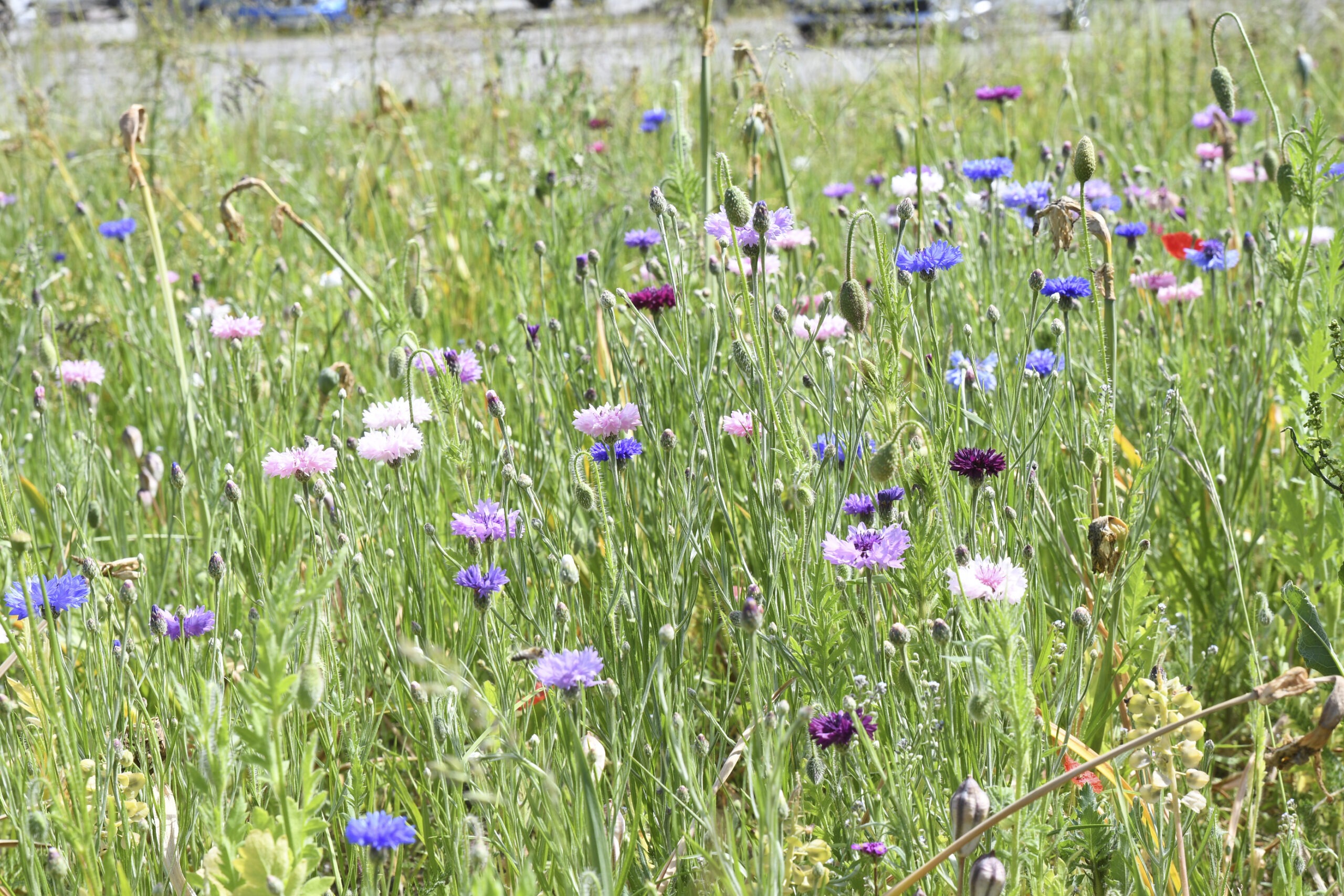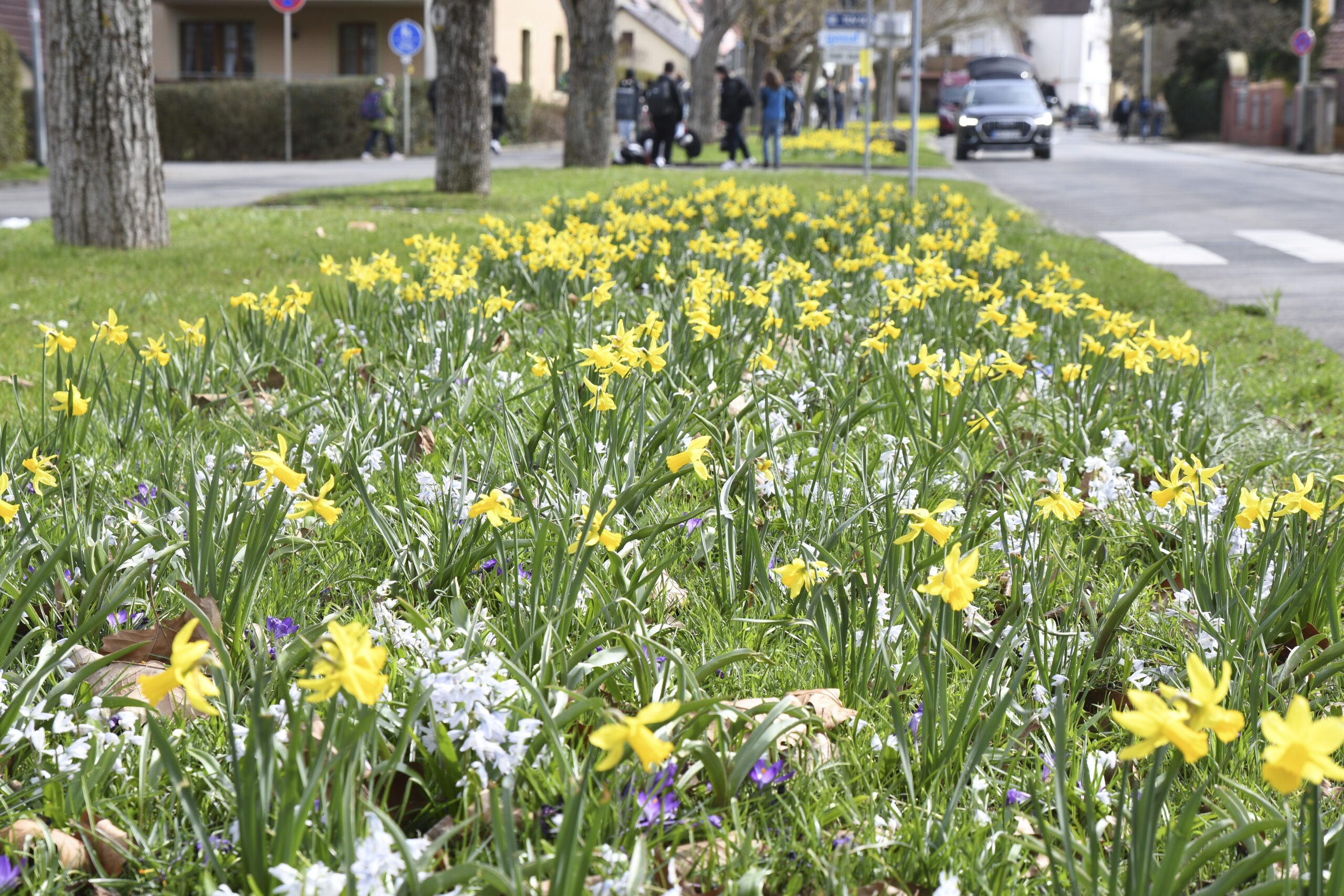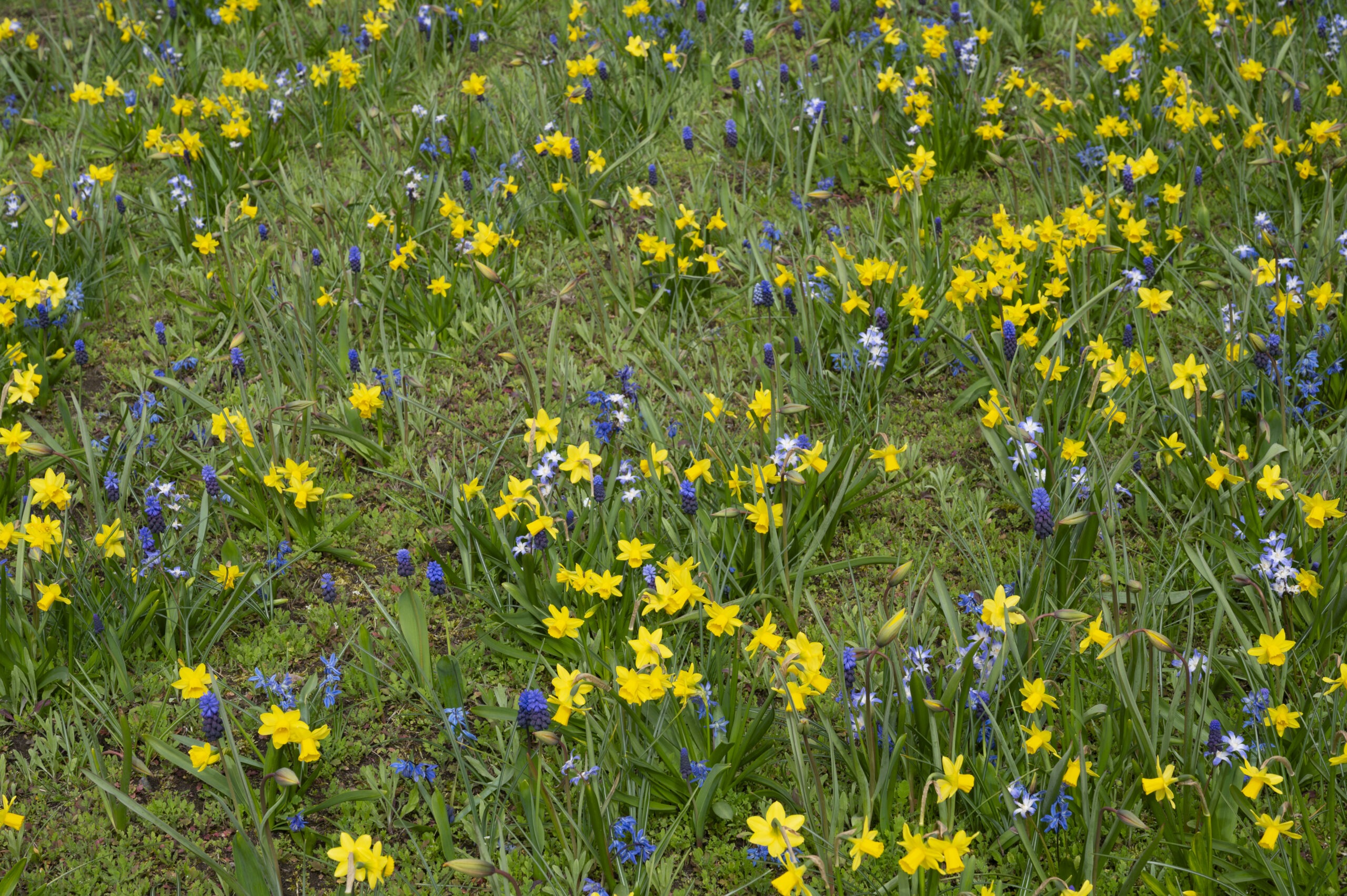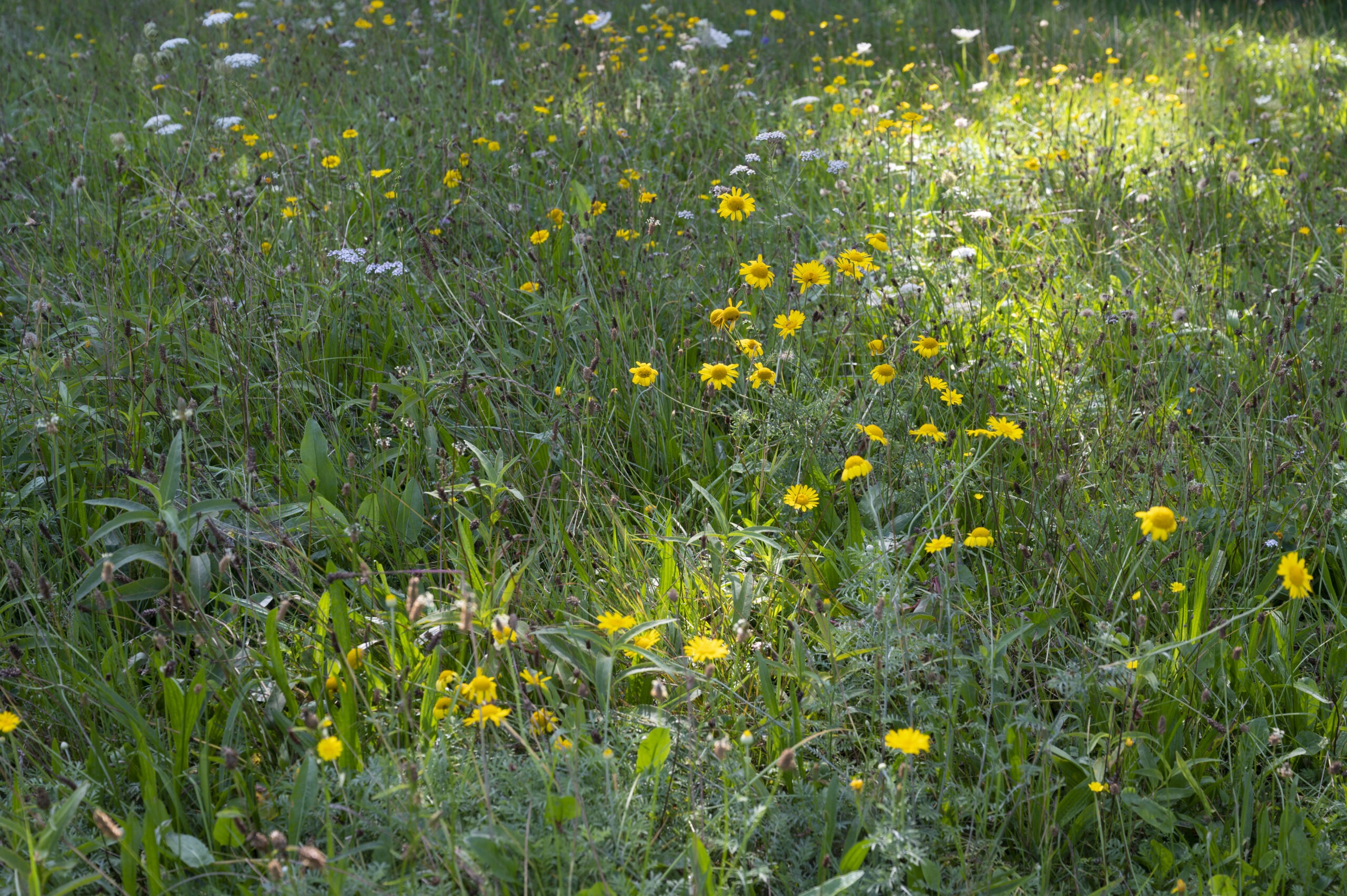Plant/sow a diversity of plants and flower bulbs
A flower meadow is a larger planting consisting of various types of flowers, flower bulbs, and grasses. For flower meadows of (native) wild plants and flower bulbs, we distinguish different types of plantings, each with its own development and management. How can we maximize the returns from flower meadows?

Return Factors
- Location
- Blooming preferences
- Mowing
- Dominance
Returns can be expressed in costs per m²/year. Returns could also be expressed in the function the flower meadow has for biodiversity and the enjoyment of residents. It doesn’t matter how you calculate your returns, in both cases, the same factors are important to achieve returns.
1. LOCATION: A flower meadow can only be successfully established in a sunny and nutrient-poor to moderately nutrient-rich soil. In rich soil, grasses grow faster and offer more competition to flowering plants. A rich soil is more suitable for a perennial plant concept, which can also have a natural and flower-rich appearance.
2. BLOOMING PREFERENCES: Blooming fields, where butterflies flutter and bees buzz, are places that make people happy. We distinguish several types of flower meadows:
Ruderal Vegetation often occurs in places where the soil is regularly but not necessarily annually disturbed. Ruderal species thrive well in inhabited areas such as farmyards, abandoned vegetable gardens, around compost heaps, and fallow lands. These vegetations consist of annual field flowers, biennials, and often short-lived perennials. The species in ruderal mixtures are rich in blooms and provide colorful results from the first year after sowing. A moderately nutrient-rich soil is desired. Due to the shorter/temporary lifespan, it is not always interesting to combine flower bulbs.
Annual (Field) Flowers are plants that have specialized over the centuries to thrive on fields. These pioneer species can grow excellently with agricultural crops such as grains. Field flowers need an annual cycle of soil cultivation as is usual on a field. Returns are achieved from the explosion of flowers, well-suited for temporary greening of public spaces, such as building land where work has not yet started.
Flower-Rich Grassland contains besides grasses also many perennial flowers. In a flower-rich grassland, the soil is hardly disturbed and is mowed once or twice a year. The soil should be relatively poor or year-round very moist. By always removing the clippings, you can impoverish the soil. Early-blooming flower bulbs combine excellently with these grasses and perennial flowers. They ensure there is food earlier in the year for wild bees. Due to the late mowing, the flower bulbs can die back naturally and develop sufficiently for the coming years through bulb growth or seed. Verver Export offers various concepts where the right selection of flower bulbs is combined with flower mixtures.
Perennial Flower Meadow does not bloom much in the first year. Adjust your expectations and don’t hope for a full flower meadow immediately. What you can do is sow an extra part of annual flowers (20%) with your perennial flower mix. Annual flowers usually bloom after 6 to 8 weeks. This way, you have something cheerful to look at in the first year while waiting for your perennial flower meadow.


3. MOWING (Management): A perennial flower meadow requires little maintenance but is necessary to maintain your flower meadow and prevent overgrowth. In the first year, you only need to mow a perennial flower meadow once (early October). From the second year, mow twice a year: early June (before the grass blooms) and early October. Leave the clippings for a few days (if the flowers have not yet shed their seeds). This allows the clippings to dry, and the dry flowers can drop their ripe seeds and spread them over the meadow again. Make sure to remove the clippings afterward so they don’t start to rot. Phased Mowing: Leave part of the flower meadow standing and only mow certain parts. You can create creative shapes in the tall grass. Phased mowing also has another advantage: you always leave some blooming plants at the end of summer or the beginning of autumn, which is important for insects and butterflies still searching for food.
4. DOMINANCE: Variation in the flower meadow is important for biodiversity. Throughout the year, different insects are active and dependent on many different flowers for their survival. If one or a few plants (sown or not) dominate the flower meadow, it is not only less beautiful but also detrimental to biodiversity. Problems with dominance can be addressed even before sowing. For example, by impoverishing the soil first and/or choosing a false seedbed. But once sown, you can only promote diversity through management. There are three plant groups that can cause dominance in the flower meadow:
- Pioneer Plants (annual, herbs, and a few grasses)
- Grasses (perennial)
- Root Weeds (perennial, herbs, and a few grasses)
In some places, you may encounter more problems with these plants than in others. Plants you want to remove are best tackled during the growing season. Mowing, especially just before or during flowering, is an effective period. This prevents further seeding and weakens the plant.
- Annual Pioneer Species: mow in June
- Grasses: mow in May
- Root Weeds: mow in July
The solution is simple: only mow where dominance occurs and always leave parts with a high diversity of herbs. The more, the better, of course, but keep in mind that perennial herbs also have the ability to regrow from the roots and that mowing them once (accidentally or not) does not necessarily harm the development of the flower meadow. In the early years, creating the right conditions by controlling unwanted plants is very important (development management), and later, you can more easily ease up (maintenance management).



